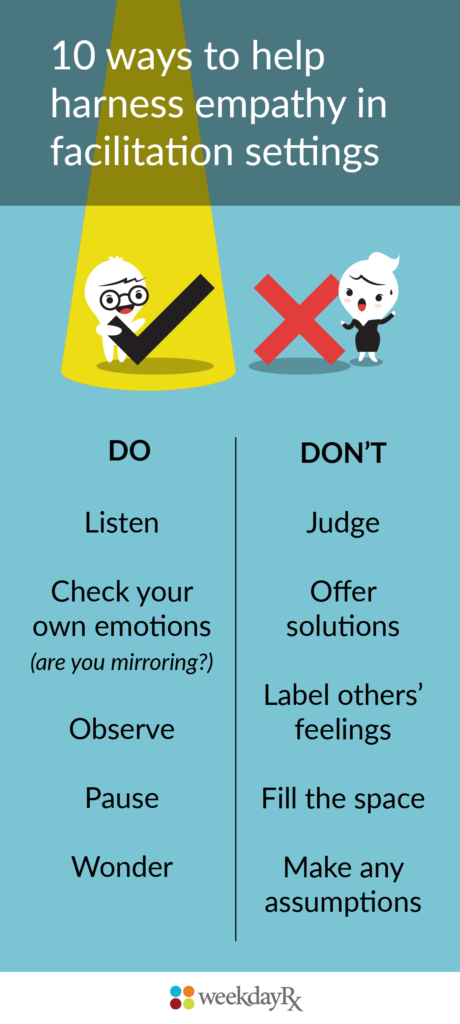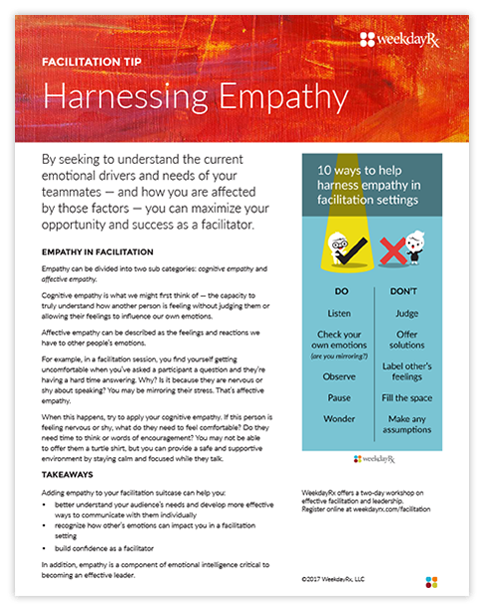Envision, Engage, Inspire
Facilitation Tip:
Harnessing Empathy
By seeking to understand the current emotional drivers and needs of your teammates — and how you are affected by those factors — you can maximize your opportunity and success as a facilitator.
Empathy in facilitation
 Empathy can be divided into two sub categories: cognitive empathy and affective empathy.
Empathy can be divided into two sub categories: cognitive empathy and affective empathy.
Cognitive empathy is what we might first think of — the capacity to truly understand how another person is feeling without judging them or allowing their feelings to influence our own emotions.
Affective empathy can be described as the feelings and reactions we have to other people’s emotions.
For example, in a facilitation session, you may find yourself getting uncomfortable when you’ve asked a participant a question and they’re having a hard time answering. Why? Is it because they are nervous or shy about speaking? You may be mirroring their stress. That’s affective empathy.
When this happens, try to apply your cognitive empathy. If this person is feeling nervous or shy, what do they need to feel comfortable? Do they need time to think or words of encouragement? You may not be able to offer them a turtle shirt, but you can provide a safe and supportive environment by staying calm and focused while they talk.
Takeaway
Adding empathy to your facilitation suitcase can help you:
- understand your audience’s needs and develop more effective ways to communicate with them individually
- recognize how others’ emotions can impact you in a facilitation setting
- build confidence as a facilitator
In addition, empathy is a component of emotional intelligence critical to becoming an effective leader.
Added challenge
Learn more about developing your cognitive and affective empathy here. Choose one or two of the suggested ways to cultivate empathy and block out some time on your calendar to try them out.
